Lygodium palmatum
Lygodium palmatum climbing fern
This fern looks like a climbing vine, with long and slender twining rachis that carries many pairs of little ivylike, palmate (shaped like a hand) pinnules. The pinnules are divided into 3 to 7 blunt tipped lobes that look like fingers of a hand.
Habitat & Range
Grows in moist acid soil rich in humus; in low thickets, margins of bogs, along streams. It needs some amount of sun, but must grow in a moist area.
Wetland Code: FACW
Phenology
Fertiles pinnules do not overwinter, sterile ones overwinter and wither back when new fronds emerge in spring.
Characteristics
Sterile pinnules about 2 in. long, 1.5 in. wide. Hand-shaped, with 3 to 7 deep lobes round to pointed at tip; margins not toothed. Light green and light textured, lightly hairy on upper surface; stays green until next year's fronds emerge. On separate wiry stalks about 1 in. long.
Fertile pinnules borne only at tips of the vine, which braches several times. Also 5 to 7 fingered and hand shaped. Smaller in size and more dissected , and more deeply or irregularly cut than sterile pinnules; greatly constricted when in full fruit. Do not overwinter.
Rachis about 48 in. long. Wavy an branching. Grows individually from rhizome and branches aboveground, unlike many other ferns. Round, dark shining black and slightly hairy at base, upper parts brownish or green and more flattened, sometimes with edges ridged. Wiry, brittle and smooth except at base.
Rhizome slender, cordlike, black, creeping below surface. Younger patches covered with bristly red hairs.
Sori each lobe of the fertile pinnule holds 2 rows of about 6 egglike sporangia covered by indusium-like flaps of leaf tissue.
Identification Tips
Rachis branches above ground unlike many other ferns.
Plant Codes
S-rank: S4 (Apparently secure)
G-rank: G4 (Apparently secure)
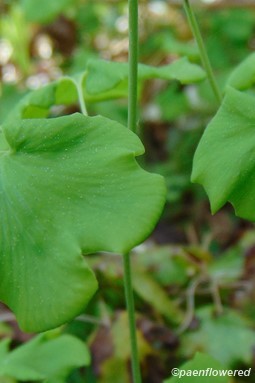
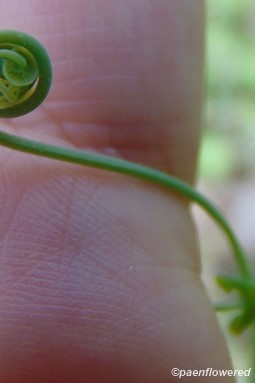
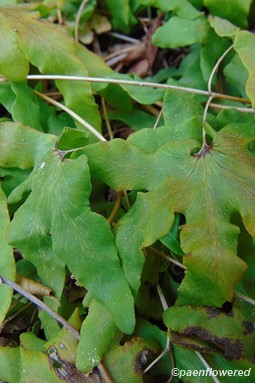
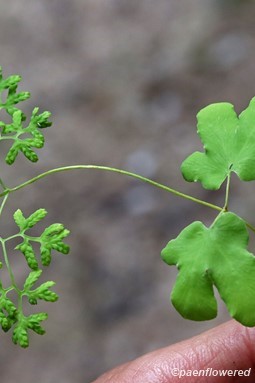
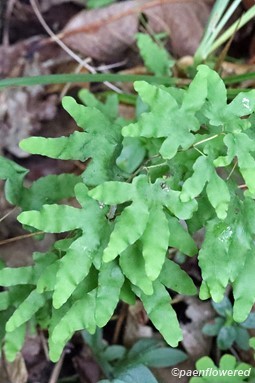



Comments
Have you spotted this plant in your area? We'd love to hear about your experience! Share your comments or questions about the plant below. Comments are moderated before posting.